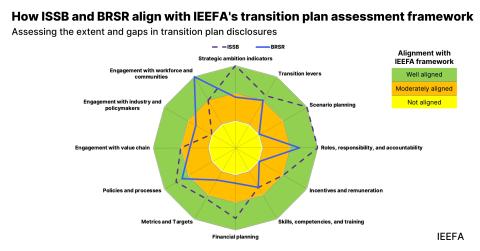IEEFA briefing note: Colorado legislature should re-think Energy Impact Assistance Act
April 25, 2019 (IEEFA U.S.) — The proposed Colorado Energy Impact Assistance Act currently under consideration by the Colorado legislature gives too much discretion to utilities and risks saddling ratepayers with onerous long-term debt, according to a briefing note released today by the Institute for Energy Economics and Financial Analysis (IEEFA).
The briefing note, Colorado’s Energy Impact Assistance Act is Short-sighted, questions the wisdom of using “securitization,” or issuing bonds, to reduce the costs of coal plant retirements. The legislation will fail in its intent to accelerate plant closures while neglecting to mitigate the true costs to communities, according to the briefing note.
The idea behind securitization is that the cash raised by the bond is used to pay off the unamortized portion of a retiring coal plant. The new electricity rate covering the payback of the bond is lower than what is currently paid for the existing coal plant. The cost savings are then, in theory, passed along to consumers.
“As structured, the law would set a dangerous and unnecessary precedent by effectively paying an excessive amount to utilities that are seeking to close economically worthless assets,” said IEEFA finance director Tom Sanzillo who wrote the briefing note.
The note recommends establishing timelines for plant closures while making allocations in the state budget to offset consequent losses to municipalities that rely on revenues from the coal industry.
“In the absence of a federal response, it is to the state’s credit that it is stepping up,” Sanzillo said, “Coloradans contributed mightily to the nation’s economic expansion, but now they are expected to shoulder alone the burden of coal’s decline.”
Colorado would be better served by a plan that sets deadlines for closing uneconomical and unneeded coal plants and allows the state’s Public Utilities Commission (PUC) and the utilities management to work through the changes.
“This needs to be combined with a road map for using tax dollars to assist displaced mine and plant employees and to replace lost revenues to local governments facing mine and plant closures.” said Sanzillo.
As an alternative, legislators might consider:
- a mandated plan to close plants,
- limits on the number of applications and/or the aggregate value of assets that can be securitized (converted into cash or loans), or
- a sunset provision (statutory expiration) for the use of the securitization mechanism.
“The Colorado bill raises very important issues related to the need to shut down coal plants at a faster rate than is currently taking place,” said Sanzillo, “it uses the right tools – legislation and regulatory structure – but in the wrong way, by tying up rate capacity for decades in order to pay for economically unusable assets rendered obsolete by competition from market forces.”
Briefing note: Colorado’s Energy Impact Assistance Act is Short-sighted
Author Contact: Tom Sanzillo ([email protected])
Media Contact: Vivienne Heston ([email protected]) +1 (914) 439-8921
About IEEFA: The Institute for Energy Economics and Financial Analysis (IEEFA) conducts research and analyses on financial and economic issues related to energy and the environment. The Institute’s mission is to accelerate the transition to a diverse, sustainable and profitable energy economy.











